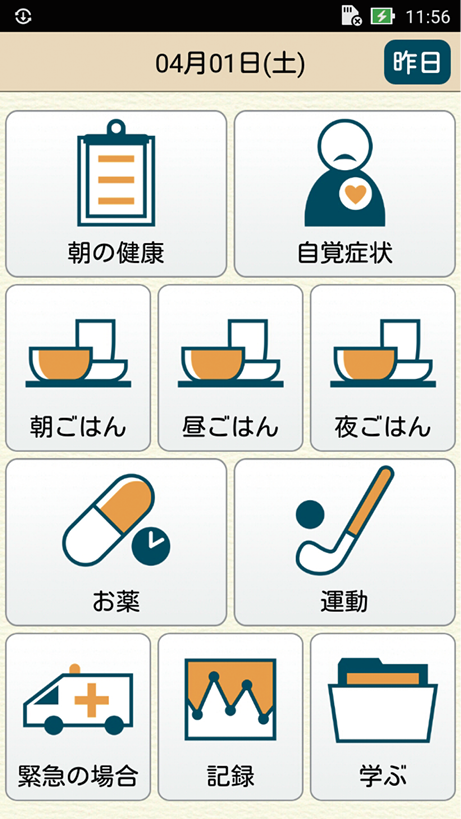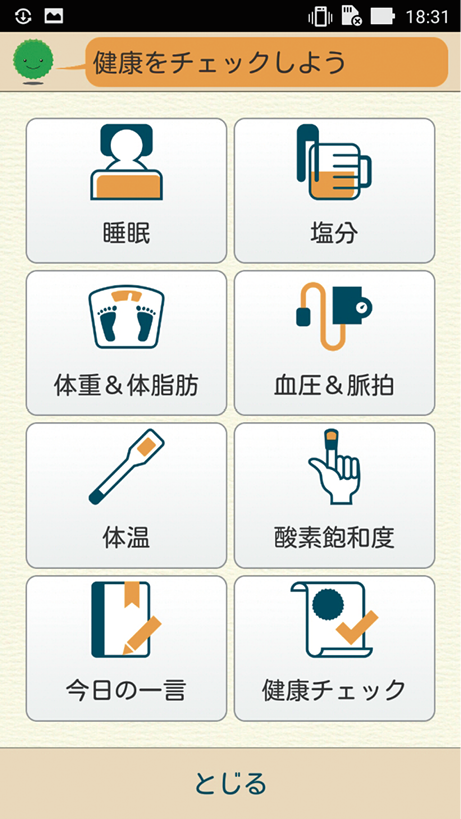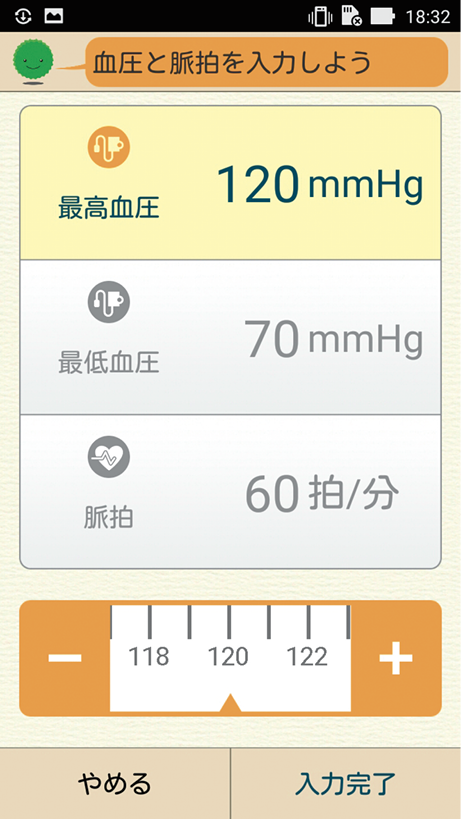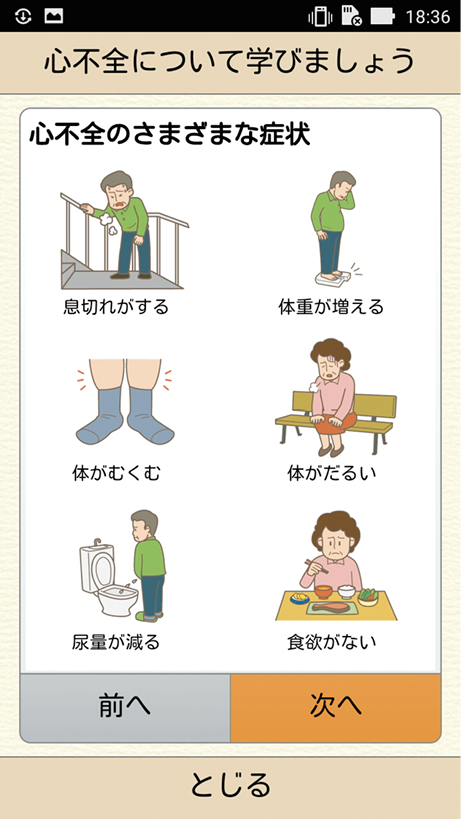COVER STORY:ACTIVITIESPreparing the Ground for Self-healthcare to Enhance QoL in a Time of CoronavirusSurvey of Maternal and Child Health at Iwamizawa City, Hokkaido and Co-Creation Project for Remote Prenatal Checks and Consultation
Highlight
The COVID-19 pandemic is having a major impact on global society, with as yet no end in sight. In recognition of the “new normal” that the pandemic has brought about, people are looking at how to encourage social activity in ways that avoid rapid increases in infection and disease severity. In particular, the medical facilities at the frontline of healthcare provision are seeking ways to provide the required care safely while also maintaining rigorous infection control practices. These developments have led to renewed interest in remote consultations and the adoption of self-healthcare practices. Hitachi is participating in the COI program of the Japan Science and Technology Agency at Hokkaido University where it is part of a project using co-creation for research into nutrition and health. Here, Hitachi Review has invited two key people involved respectively in a survey of maternal and child health at Iwamizawa City, Hokkaido that forms part of this research project and in remote prenatal checks and consultations being undertaken jointly with Hokkaido University Hospital, the aims of which include reducing the risk of COVID-19 infection in pregnant women. Along with asking them about the results of their work, the discussion also touches on how healthcare is being provided in this time of pandemic.
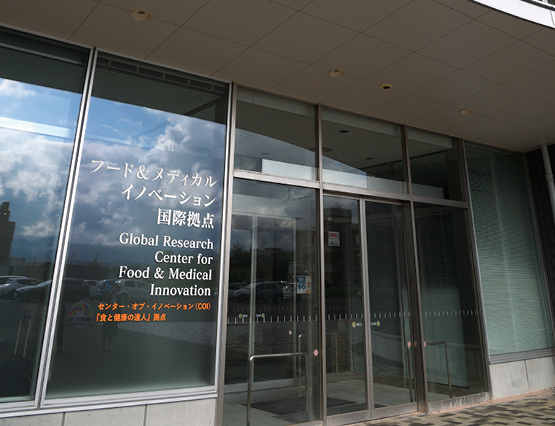
Fear and Anxiety Provoked by an Unknown Virus
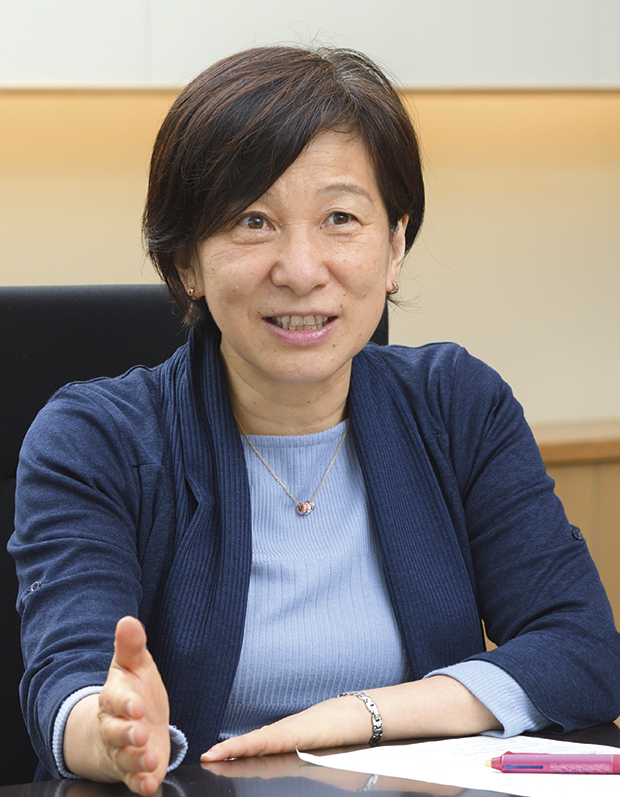 Akiko Tamakoshi
Akiko Tamakoshi
Professor, Graduate School of Medicine, Hokkaido University
Graduated from Nagoya University Graduate School of Medicine in 1991. After working as an associate professor at the same school, clinical trials manager at the National Center for Geriatrics and Gerontology, and (specially appointed) professor at the School of Medicine, Aichi Medical University, she was appointed to her current position in 2012.
YoshinoCOVID-19 is having a major effect on society. As doctors, how do you regard this developing situation?
TamakoshiWhile we are all familiar with infectious disease, I believe that anxiety over COVID-19 was exacerbated by how it spread so rapidly around the world at a time when we were still uncertain of its severity, infectivity, and fatality. When the state of emergency was declared in Hokkaido at the end of February, we were all very worried.
UmazumeInvisible, and yet with the potential to cause serious disease even in the young and healthy, the virus has been an ever-present cause of fear and anxiety in the healthcare workplace that has left us mentally exhausted.
TamakoshiThat is especially true of those who work directly with patients.
UmazumeThere were also problems with existing systems not working in the new environment. As existing methods for dealing with designated infectious diseases did not envisage the need to treat and hospitalize large numbers of infected people, we had to create a new regime for dealing with incoming patients from scratch. The first step in smoothing the process of admitting infectious people was to establish the network and systems for communication with community healthcare providers, something that took a lot of work. We have now reached a point, fortunately, where facilities have rules in place and we are able to accept patients smoothly so long as maximum numbers are not exceeded.
TamakoshiMeasures against COVID-19 are also complicated by the fact that it has a long incubation period (from infection to developing symptoms) compared to other diseases like influenza, with the potential to infect other people during this asymptomatic or pre-symptomatic phase. Until an effective treatment or vaccine becomes available, a difficult balancing act will be needed to maintain economic activity while also taking steps to prevent an increase in infections and severity.
Changes to Working Practices in Healthcare
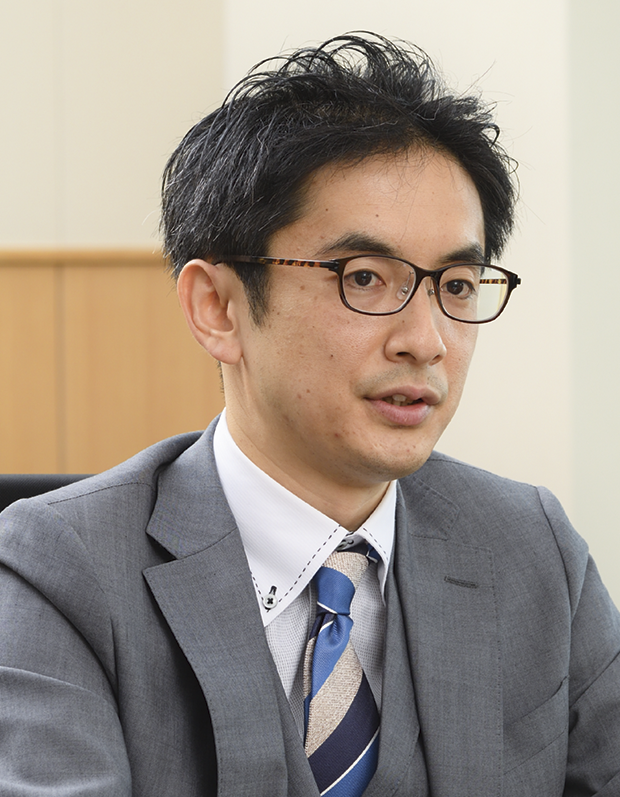 Takeshi Umazume
Takeshi Umazume
Medical Director and Assistant Professor of Obstetrics, Hokkaido University Hospital
Graduated from Hokkaido University School of Medicine in 2007. After undertaking a medical internship and studies that included reproductive and developmental medicine and obstetrics and reproductive medicine, he was appointed to his current position in 2017.
YoshinoWhat changes have you seen in the healthcare workplace and research environment?
UmazumeWhile the number of patients coming to appointments continues to be low across Hokkaido University Hospital as a whole due to patients not being seen, the number in obstetrics is on the rise. In terms of changes within the hospital, infection control measures continue in place and medical staff are paying more attention to health management than they used to. A lot of progress has also been made on working style reform, such as limiting conferences to only those that are essential and keeping them as brief as possible, and trying to fit the day’s schedule into a shorter time period to reduce working hours.
TamakoshiMeetings are increasingly being held online, and then only when they are really needed. Not having to make trips such as to Tokyo and back certainly makes life easier by cutting down on travel time.
UmazumeI currently serve as an associate editor for the journal of the Japan Society of Obstetrics and Gynecology and we have had a two-fold increase in the number of papers submitted. I suspect this indicates that the growing shift toward online meetings and other working style reforms at hospitals around Japan is giving people more time to write papers.
TamakoshiThat’s amazing. I think it is great how we have been able to recognize the benefits of going online. While there are times when it is important to meet face-to-face and I expect there will be a return to in-person meetings once the infections have been contained, I also expect these online habits to continue to some extent.
YoshinoLikewise, past practice in our research project was to visit the location of the study to hold meetings, whereas our regular weekly meeting now takes place online. Thinking about it, there was no technical reason why we couldn’t have had online meetings before. It was really just a question of mindset.
Survey of Factors Influencing Maternal and Child Health
YoshinoThis research project is a survey of maternal and child health being conducted in Iwamizawa City, Hokkaido. As part of the Center of Innovation (COI) program of the Japan Science and Technology Agency, Hokkaido University has established its Innovative Food and Healthcare MASTER facility as a collaboration between industry, government, and academia. I have been appointed project leader with Professor Tamakoshi as research leader. The project is working toward creating a society that is friendly to women, children, and the elderly, with the survey of maternal and child health being one of the research topics. Professor, could you please tell us about your current progress?
TamakoshiAs a cohort study* of mothers and children, the survey of maternal and child health in Iwamizawa City is part of an initiative aimed at making the town into “the best place to raise children.” The study is open to participation by all babies born as official residents of Iwamizawa City and is investigating the factors that influence maternal and child health through the accumulation and analysis of various data. These include results from blood or urine samples taken during health checks as well as from a questionnaire on the diet and living conditions of expectant and nursing mothers and their babies. Encouraging behavioral change is another objective, and this includes pregnant women being given an assessment of their diet and advice on how to improve it based on the results of their questionnaire.
Japan has a high proportion of babies with low birth weights by the standards of developed nations and the tendency toward slim physiques in young women is thought to be one of the reasons for this. Low birth weight is a risk factor for health not only around the time of birth, but also in adult life, making it something we should try to prevent if we want people to live long and healthy lives. Although the survey of maternal and child health only commenced in 2017, we have already seen a fall in the percentage of low birth weights from 10.4% in 2015 to 8.5% in 2018. The study has also grown in scope with an additional hospital joining in March 2020.
Although we had concerns about whether the study could continue amid the spread of COVID-19, given that health checks for pregnant women and babies go on regardless, the study has carried on as before while taking due care.
YoshinoWith the cooperation of participating hospitals, you have had fewer problems than might have been expected.
TamakoshiWe have made changes to our operational rules to reduce infection risk, such as delaying the analysis of some samples for two weeks to confirm that the person concerned is free of infection.
- *
- A cohort study is a research practice whereby a group of people (cohort) who do not (or did not, at a particular point in the past) suffer from the disease being studied are recruited for a study where they are observed over a long period to investigate whether or not particular factors play a part in the occurrence or prevention of the disease.
Remote Health Checks up and Running in just Eight Days
YoshinoWith the health checks for pregnant women being essential for data gathering by the maternal and child health project, Hokkaido University Hospital and the COI together adopted remote consultations as a standard practice as part of measures to prevent COVID-19 infection. Professor Umazume, as the person in charge of this, can you give us your impressions.
UmazumeWe started looking at this in mid-February in expectation of it becoming necessary one way or another, but the work picked up pace a week later when the first cases started to be reported in Hokkaido. As birth is not something that can be put off, a halt to consultations or admissions due to cross-infection within the hospital would cause problems for pregnant women. The need to maintain hospital functions was another reason to move quickly on remote consultations.
It took a lot of work with the Hokkaido government and Ministry of Health, Labour and Welfare to get things started, especially regarding the fees for prenatal checks. Nevertheless, thanks to the provision of medical equipment from vendors and manpower from Hokkaido University COI as well as the efforts of everyone at the Hokkaido government and the cooperation of hospital administration and medical ethics staff, we were able to go ahead with the first consultations only eight days after we started work on the idea. Although it was also the case that Hokkaido was among the first places to experience the spread of infection and created a sense of urgency, even so, I was astonished that we were able to get it done so quickly.
After starting on March 4, the number of pregnant women having remote consultations reached 80 as of June 30, many of them expressing positive feedback. The consultations themselves proceeded without problems and were covered by an initial report that was issued recently. I hope that by reporting our outcomes early like this we can be of some value to other medical institutions.
Moreover, because we are the only medical facility in Japan to have held remote consultations for pregnant women in such numbers, I wanted to conduct a thorough survey of how those who participated felt about the experience and publish the results. While in this case it was done as an emergency measure to prevent the spread of infection, I embarked on the questionnaire out of my belief that it is essential to get actual feedback on matters such as whether face-to-face consultations would be preferable if things were to return to normal, and whether there is a difference in how the practice is perceived by those who live at a distance compared to those who live close by.
Working Toward Routine Use of Remote Consultations
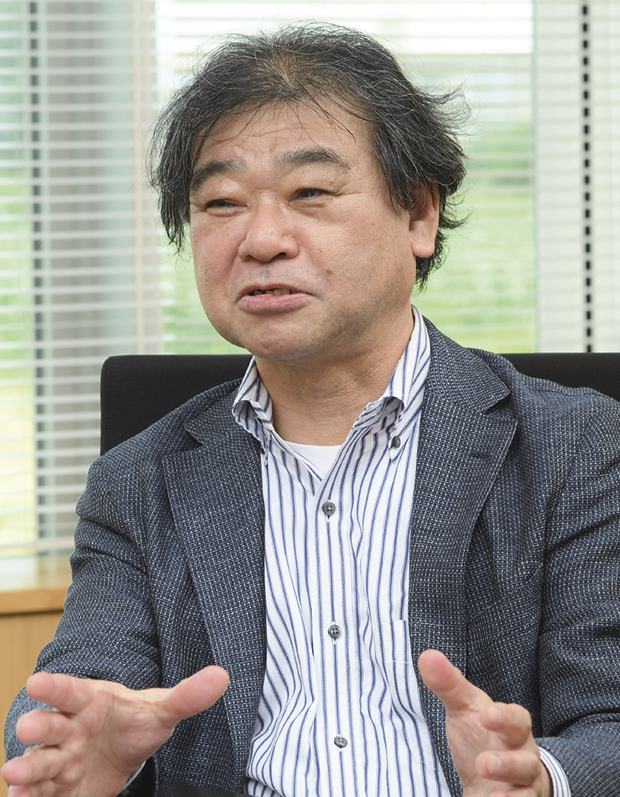 Masanori Yoshino
Masanori Yoshino
Senior Project Manager, Center for Exploratory Research and Hitachi Hokkaido University Laboratory, Research & Development Group, Hitachi, Ltd.
Joined Hitachi, Ltd. in 1980 where his work included video, camera, DVD, and television marketing, product planning, and business planning. Prior to taking up his current position, he was appointed to coordinate new business development in areas like household energy management and healthcare in 2010, joined the Center for Exploratory Research in 2014, was appointed Director of the Hokkaido University COI in 2015, and became head of Hitachi Hokkaido University Laboratory in 2016. He is also a visiting professor at Hokkaido University.
YoshinoA notable feature of these remote consultations were that they also allowed for the hospital pharmacy to dispatch medicines.
UmazumeThat’s right. We were able to do this thanks to the work by the pharmacy and clinical teams. I doubt there are many places in Japan that have gone as far as this.
YoshinoThere is also a view that use of remote consultations will become routine in the post-pandemic environment whether or not the virus continues to circulate. Are there any aspects that you would like to see improved in the future?
UmazumeAs we wanted the remote health checks to be at the same level as face-to-face checks, along with consultation via a video conferencing system, we also sent out fetal heartrate monitors to the women who needed them to facilitate examination. However, factors such as the cost of the monitors and the difficulties of distributing and retrieving them prompted us to consider the need for a system that would allow fetal heartrate monitoring to be done at home using simpler equipment. Were such a system available, it would allow for longer intervals between consultations. I believe it is easier to adopt this sort of approach in obstetrics than it is in other specialties.
There are a lot of regulatory requirements and guidelines surrounding remote consultations and the reality is that this can make them difficult to implement in practice. As doing it as an emergency measure for infection prevention lowered the barriers, we see this opportunity as a chance to work from the medical side on getting the rules loosened, trying various things and gathering evidence that it is being done safely and reliably.
YoshinoIt is good to be able to gather feedback from the medical staff and women who are directly involved so as to ensure that things are done in a way that works in practice.
UmazumeThe first issue is that the legal rules and guidelines fail to keep up with the rapid advance of technology. It has been assumed, for example, that remote consultations would be linked to electronic patient records and the hospital’s medical systems, and so there are a lot of detailed requirements around things like security. When put into practice, however, the consultations were conducted using online video tools and not having heartrate monitors connected to the electronic records system did not pose any problems. Guidelines that are out of step with actual practice ought to be changed. While it may not be simple, I see my job first and foremost as being to establish the evidence for doing so.
Concern about the Pandemic’s Impact on Children
YoshinoProfessor Tamakoshi, while your specialty is in public health, along with the survey of maternal and child health, are there any particular challenges you would like to take up in the future?
TamakoshiPublic health is a field that seeks to enable everyone in society to maintain and enhance not only their physical, but also their mental health, so that they can live their own lives. It seeks to provide evidence and undertake practical action and social system design aimed at creating the type of society where everyone can enjoy a higher quality of life (QoL), including both the healthy and those suffering from illness, from unborn and newborn babies to the elderly. As well as being an epidemiological study aimed at providing evidence, the maternal and child health survey project is also a practical action encouraging behavior change. We need to use this longitudinal study to identify the factors that impede good health and establish preventive measures. This is why it is important that it continue as a long-running study, with help from a wide variety of people.
In terms of public health, moreover, the mental health of the children who live in modern society is a concern. In the current pandemic, especially, they are being forced to put up with all sorts of different things, like being unable to meet with friends due to extended school closures, shortened summer holidays, and not being able to go on family trips. Interactions with other people are also reduced. I am concerned about the impacts this will have on children’s lives and their mental health. That we are living in extraordinary times, I believe, makes it especially important that amid our practical actions we also provide opportunities for them to experience hope and the enjoyment of life.
YoshinoWe certainly want to pursue research that empowers society. Professor Umazume, what else is there other than remote consultations that you would like to work on in the future?
UmazumeOne thing I am conscious of in the current pandemic is that medical practitioners should engage more directly with society. Having to change what we do, such as the following of infection control measures at schools, is a major imposition on all of us who are laypeople when it comes to infectious diseases. There must be something we can do about that. One example that comes to mind from listening to our conversation today is that it would be good if we were able to develop and trial mechanisms such as body temperature monitoring systems for helping to prevent infection in places like Iwamizawa City where there is a close relationship between local government, residents, and the medical profession, and then to pass on the results of this work to other municipalities or schools, and so on.
Actions by Doctors Point to a Better Way Forward for Healthcare and Society
YoshinoIwamizawa City has added a COVID-19 page to the city website that provides the important information that people need to know in the form of a message from Professor Tamakoshi in her role as research leader of the Hokkaido University COI. I understand that this material has been widely read.
The accumulated wisdom and knowledge of the medical profession represents an asset for society and I see great potential for actively engaging with society as talked about by Professor Umazume and for getting the message across. Going further, as an organization, the university with which you are affiliated has an important role to play in society and is trusted by the public. The survey of maternal and child health is a reminder of this and I believe that by making the most of these characteristics you can have an even louder voice in society.
UmazumeThat’s right. I talked earlier about my desire to change rules, and in the medical profession in particular, which has a direct bearing on people’s lives, there are many things that only those people who actually work in healthcare can speak up about and change. Based on my experience of getting remote consultations up and running where I was dealing with people with whom I would not normally come into contact, I believe that, by taking direct action and speaking up, medical practitioners like myself may have a part to play in finding a better way forward for healthcare and society.
Another thing that became apparent to me from my work on remote consultation is that clinicians are essentially in a passive position of having to wait for patients and that there is a sense in which patients likewise have a passive attitude toward medical care and health, putting responsibility in the hands of the doctor. It may be that this too is something that needs to change.
Difficulty in accessing healthcare is not something that only happens at times like now when an infectious disease is rampant. It can also occur during disasters and other emergencies. While such times call on people to manage their own health, because of the difficulty of putting this into action rapidly, I believe we need a form of healthcare in which everyone routinely takes responsibility for their own health (self-healthcare), while medical practitioners commit to advising them on whether they are on the right track or whether there are things they should be doing differently.
Self-healthcare Offering Hope to Local Communities
YoshinoIt may be that most ordinary city residents such as myself see hospitals as another public service like local government. That is, they adopt a passive attitude, looking to them to help out when something is wrong. Thinking about it, however, self-healthcare is important because your own health is something that only you can take care of yourself. Even better is to have a doctor watch over how you go about this.
Self-healthcare platforms are one of the research and development topics of the Hokkaido University COI, work that has included the development of the Mimamori Cho (health diary) self-healthcare app that people can use to manage their own health and a trial involving the distribution of tablet computers loaded with the app to patients with cardiac problems. The app works by having patients use it on a daily basis to record their vital signs, self-assessed symptoms, diet, sleep, and any medications they have taken. This information is then used as a basis for calculating a risk score and to issue an alert and a recommendation that they seek medical help if a worsening of their condition is indicated. In the pilot program that has been running, participants have acquired a habit of making daily self-health-checks, and a reduction in salt intake has been among the benefits demonstrated. Future plans include developing and rolling out a version of the app for smartphones and one that addresses lifestyles diseases, with the aim of the research being to relocate the healthcare platform from the hospital to the home. Through apps like Mimamori Cho, I believe it may be possible to provide the sort of reassurance that comes from having a doctor by your side.
TamakoshiHokkaido is a vast region and there are places where medical institutions are difficult to access. That is why healthcare that is not reliant on hospitals is important. If platforms like these become available, they have potential for use not just in Hokkaido, but also in other places that are losing people as the population falls. You hear about the wider use of telework as a means of preventing the spread of COVID-19 and about people considering a move to the regions to get away from the high-density living that promotes contagion. I suspect the number of such people would increase were they still able to feel confident about living somewhere where healthcare services are sparse, and that this would offer such communities hope for future.
YoshinoThe Iwamizawa City project focusing on maternal and child health represents a groundbreaking initiative that is also doing an excellent job of bringing hope for the future. Given that it is intended as a longitudinal study, it may take five or 10 years for the project to demonstrate results. Nevertheless, as a long-running initiative, and by taking advantage of synergies with remote consultations and other areas of research and development, I hope it can expand the groundwork for self-healthcare. Along with hoping that each of us can become “Innovative Food and Healthcare MASTERs,” I also look forward to this work helping to create a society with a high QoL by extending Hokkaido’s co-creation model to the rest of Japan. Thank you for your time today.




